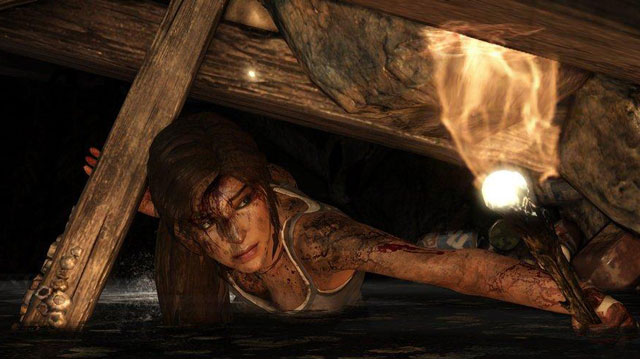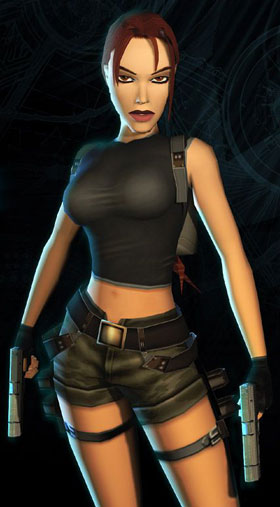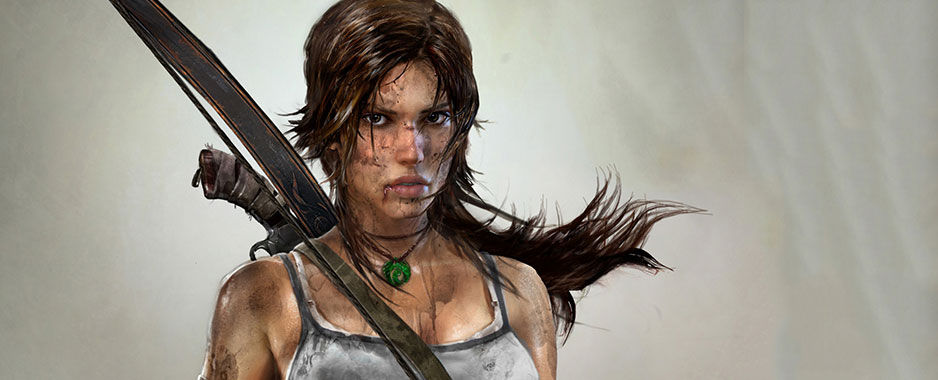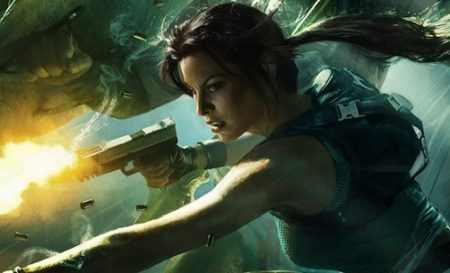
I’ve never been much of a gamer. The only time I’ve ever played were one or two abortive attempts at a Super Mario Bros game on my cousins’ television as a clumsy 10-year-old.
Yet, even for me, the name of Lara Croft has been ubiquitous. The sex symbol Tomb Raider character was synonymous with unreal male desire and I knew her abnormally large breasts were something of a running joke.
Sure, she was the first strong female lead in gaming and pioneered the way for a new kind of female action heroine. But a lot of that good stuff, not to mention the noble intentions of her original designer, were overshadowed by what became her primary, um, assets.
So when I saw the return of a redesigned Croft to the gaming screen this year, after an extended hiatus, I was happily surprised.
This prequel is something of an origin story, presenting us with a younger Croft, seemingly before she developed her penchant for hot pants and crop tops. Or maybe this is a whole new Croft for future versions too. I’m hoping for the latter.
But the sensible cargo pants and full-length top are in some ways the least of the changes. Dramatically improved technology has made for a startlingly realistic illustration of the character. Gone is the cartoonish, flat image and in its place is a woman that looks engagingly real, right down to her remarkably reduced bust size. It’s one that I can look at without reflexively straightening my back to try to achieve the obscene perkiness of her earlier iterations.

It’s a size C, I’d say, about the size Angelina Jolie insisted on when she played the action figure in the 2001 movie version. She, like many others, thought the ridiculously inflated balloons Croft sported as breasts were a bad role model for young girls. Renowned feminist Germaine Greer called her an embodiment of male fantasies.
Croft’s more realistic look is down to a number of factors. She was apparently modelled using motion-capture technology, featuring gymnasts with normal proportions. But I hesitate to think that changes in technology are the only reason for this refreshingly real Croft.
Gaming journalist Tracey Lien put it down to a new generation of game developers entering the industry, with different views on beauty, sexuality and desirability. She also pointed to changing ideals of beauty. “Consider that in 1993 Anna Nicole Smith was Playboy’s Playmate of the Year, who most teenage boys pined over, whereas now you’re more likely to find a young guy crushing over Zooey Deschanel or Felicia Day.”
But perhaps this new Croft isn’t as new as we’d like to think. An editor in the gaming industry, Colin Moriarty, once stated that while she began as an intelligent and strong female character, she became more like a “virtual blow-up doll”. Indeed, her original designer and creator wanted to defy stereotypes about women in her creation, but was overruled by marketing imperatives, that increasingly sexualised the character.
Looking at that early Lara Croft with her too-large and too-high breasts, I wonder if perhaps technology has been a driving force in her evolution after all. Perhaps her designer’s original vision to create an interesting female character that wasn’t simply a victim or a sex bomb couldn’t be realised using limited graphic tools and story telling.
We are drawn to a remarkable woman not just because she is physically attractive but also because she is complex. In her eyes, and on her body are elements of her story. She is beautiful not because of the size of her breasts but because of the tilt of her head, the tone of her voice, the intensity of her gaze at times, and the gestures that are solely hers. None of this could be realised in earlier versions of Lara Croft so her creators over-compensated. They crudely exaggerated the most basic elements that are a visual signal of a woman: large breasts and shapely hips.
But the new Lara Croft had a whole new world of nuance opened up to her. She has an engaging back story, written by Rihanna Pratchett, daughter of legendary fantasy writer Terry Pratchett. She has detailed expressions that convey refined emotions. The cartoonish proportions are no longer needed.
What we are left with is less of a hollow male fantasy and a closer approximation of what a real woman may look like. And that, in the sometimes dangerously unreal world of male fantasy, can only be a good thing. — (c) 2013 Mail & Guardian
- Verashni Pillay is the deputy editor of the Mail & Guardian Online. Visit the Mail & Guardian Online, the smart news source
- Read Lance Harris’s review of the new Tomb Raider



